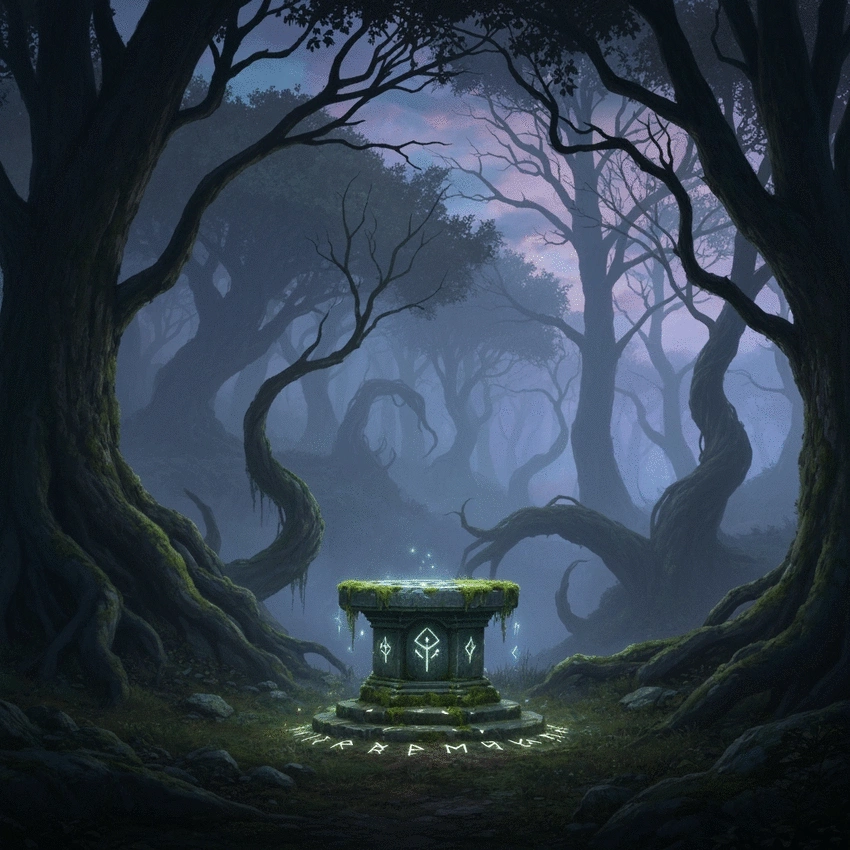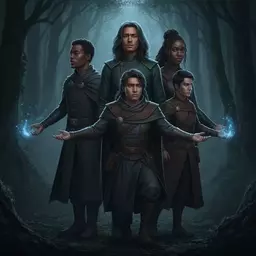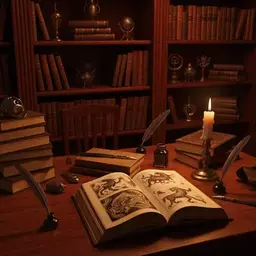Crafting Character Arcs in Dark Fantasy
By Isolde Thorne / Oct 26
In the dim light of a flickering candle, the shadows of our choices dance upon the walls, whispering tales of power and corruption. Have you considered the weight of a single decision in a world where every choice can tip the scales of fate? This is the heart of dark fantasy—a realm where the line between hero and villain blurs, revealing profound moral complexities that lie beneath the surface.
An overview of the key components that build immersive dark fantasy realms, focusing on their distinct characteristics and influence.
Characters often tread the fine line between hero and villain, facing choices that challenge their very essence.
Worlds steeped in history, drawing from mythology and ancient traditions to enrich the narrative.
Environments evoking unease and wonder, enhancing the overall narrative and mood.
Provides a framework for understanding moral complexities, themes of duality and sacrifice.
Welcome, fellow literary explorers! Today, we embark on a journey through the foundations of dark fantasy realms, where shadows intertwine with narrative threads to create captivating worlds. Dark fantasy beckons with its intricate tapestry of myth, lore, and moral ambiguity. Understanding the elements that build these landscapes is crucial for any aspiring author or enthusiast of the genre.
Dark fantasy is not merely a genre; it is a celebration of the shadowy aspects of storytelling. It blends elements of traditional fantasy with the eerie and unsettling, exploring themes of power, corruption, and redemption. At its core, dark fantasy invites us to confront our deepest fears while exploring the potential for humanity even in the darkest of places. For a deeper understanding of the genre, you can refer to Wikipedia's definition of Dark Fantasy.
By immersing ourselves in these elements, we can better appreciate the depth that dark fantasy offers, allowing us to weave our own tales of intrigue and exploration.
Lore serves as the backbone of any dark fantasy realm, enriching the narrative with layers of history and cultural significance. It is this intricate web of stories and traditions that brings the world to life! Consider how a once-great civilization might have fallen into ruin, or how a mythical creature's tragic past shapes its interactions with protagonists. When building your world, it's essential to consider whether your worldbuilding is up to code, ensuring coherence and depth.
At Shadows of Imagination, we believe that delving into lore is essential for crafting immersive experiences. By understanding the significance of lore, we can create narratives that resonate deeply with readers, inviting them to explore every shadowed corner of our imagined worlds.
Mythology plays a pivotal role in shaping dark fantasy narratives. It provides a framework for understanding the moral complexities that often define the genre. By reimagining existing myths or creating new ones, authors can explore themes of duality, sacrifice, and the consequences of power.
As we unravel these narratives, we invite readers to question their own understanding of morality and power. What lessons can we learn from the myths that shape our reality? The answers lie in the shadows, waiting to be discovered.
The atmosphere of your dark fantasy realm is just as important as the plot itself. It sets the stage for the events that unfold, enveloping readers in a world where tension and intrigue reign. To effectively build your world, understanding the 3 tiers of fantasy world-building can be incredibly helpful. Let’s explore how we can create an environment that captures the essence of darkness!
As you dive into the realms of dark fantasy, we want to know: What aspect of dark fantasy do you find most captivating? Share your thoughts below:
As we traverse the intricate landscapes of dark fantasy, it's essential to reflect on the myriad elements that contribute to a compelling narrative. From the vivid lore that breathes life into shadowed worlds to the deep moral complexities entwined in every character's journey, each aspect plays a pivotal role in crafting an unforgettable tale. Whether you're a seasoned writer or an aspiring author, understanding these key elements can inspire your storytelling journey.
Here are some key takeaways to consider as you embark on your worldbuilding adventure:
These insights will not only enhance your writing but also invite readers to explore the depths of imagination that dark fantasy offers. Remember, every shadowed realm has its own story to tell—what will yours be?
Here are some common questions about dark fantasy, based on the topics discussed in this article:
Every storyteller has a unique voice and perspective that can bring something new to the genre. At Shadows of Imagination, we celebrate the creative spirit, encouraging you to weave your own narratives that resonate with the complexities of human experience. Don’t be afraid to delve into your own fears and aspirations; the most powerful stories often emerge from the depths of our emotions.
Let your imagination run wild, knowing that every twist and turn of your story contributes to the rich tapestry of dark fantasy. What shadows will you cast in your narrative?
Dark fantasy invites us to confront our deepest fears and moral dilemmas, urging us to reflect on the nature of humanity itself. As you craft your stories, consider how these themes resonate within your characters and plots. The struggle between light and darkness often highlights the complexity of moral choices, allowing readers to engage on a deeper level.
Through this exploration, you not only enrich your narratives but also foster a connection with your readers, inviting them to ponder their own choices and the shadows that linger within us all.
Now that you've gathered insights on crafting a dark fantasy realm, it’s time to put your knowledge into action! I invite you to share your creations with the Shadows of Imagination community. Whether it's a character sketch, a piece of lore, or a short story, your contributions can spark conversations and inspire others.
Let's foster a vibrant community that celebrates the imaginative power of dark fantasy!
The journey of a writer is one of constant growth and evolution. To help you enhance your skills, Shadows of Imagination offers a wealth of resources and learning opportunities. From writing guides to insightful author interviews, we aim to equip you with the tools needed to succeed in your craft.
With each resource, you’ll find new paths to explore, shaping your narrative voice and enriching your stories. So, what are you waiting for? Dive into your dark fantasy adventure today! Together, let's illuminate the shadows of creativity.
Here is a quick recap of the important points discussed in the article:

 Crafting Character Arcs in Dark Fantasy
In the dim light of a flickering candle, the shadows of our choices dance upon the walls, whispering
Crafting Character Arcs in Dark Fantasy
In the dim light of a flickering candle, the shadows of our choices dance upon the walls, whispering
 Crafting Morally Complex Dark Fantasies
In the dim light of a flickering candle, the shadows of our choices dance upon the walls, whispering
Crafting Morally Complex Dark Fantasies
In the dim light of a flickering candle, the shadows of our choices dance upon the walls, whispering
 Exploring Dark Fantasy Narratives
In the dim light of a flickering candle, the shadows of our choices dance upon the walls, whispering
Exploring Dark Fantasy Narratives
In the dim light of a flickering candle, the shadows of our choices dance upon the walls, whispering